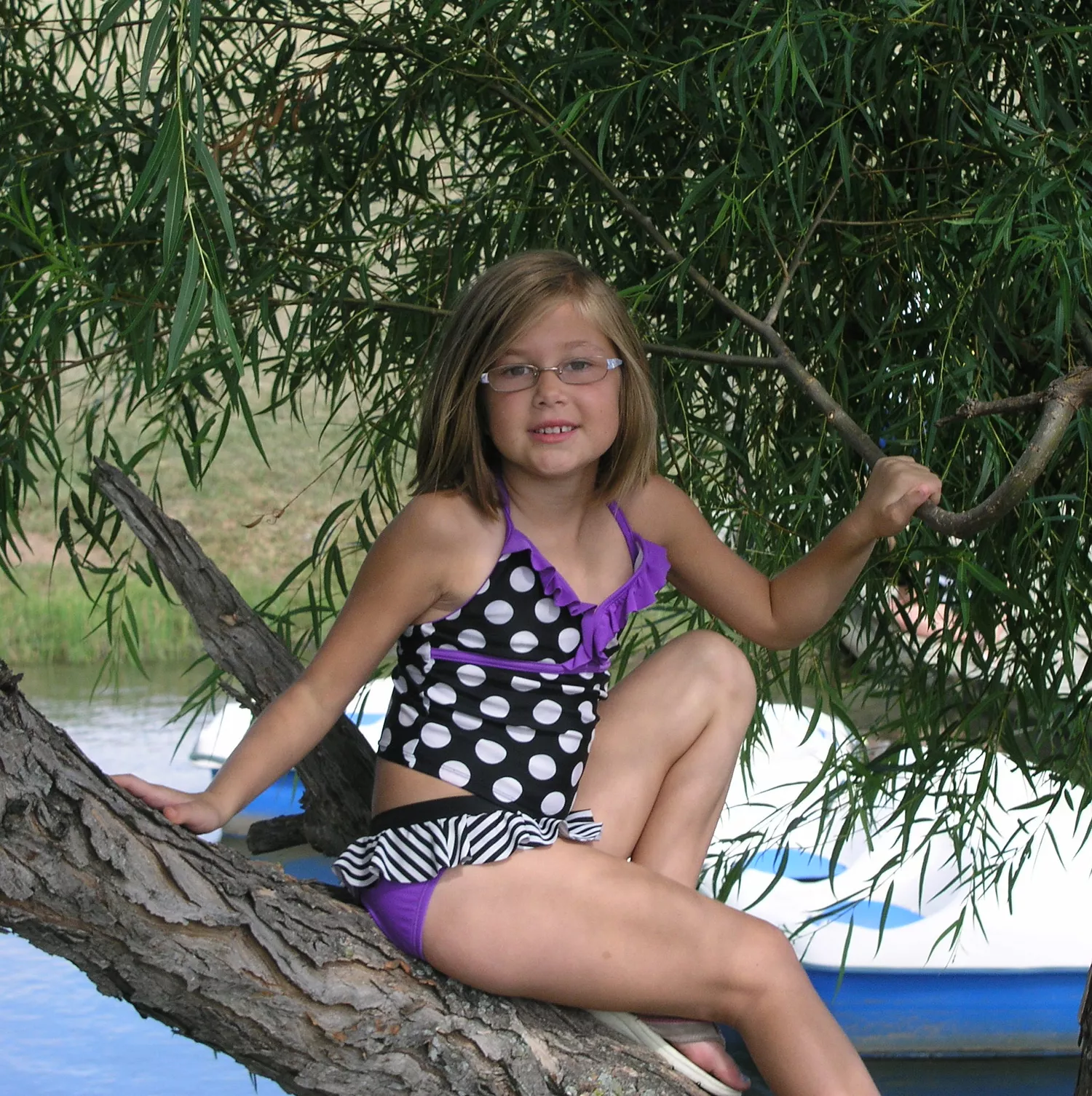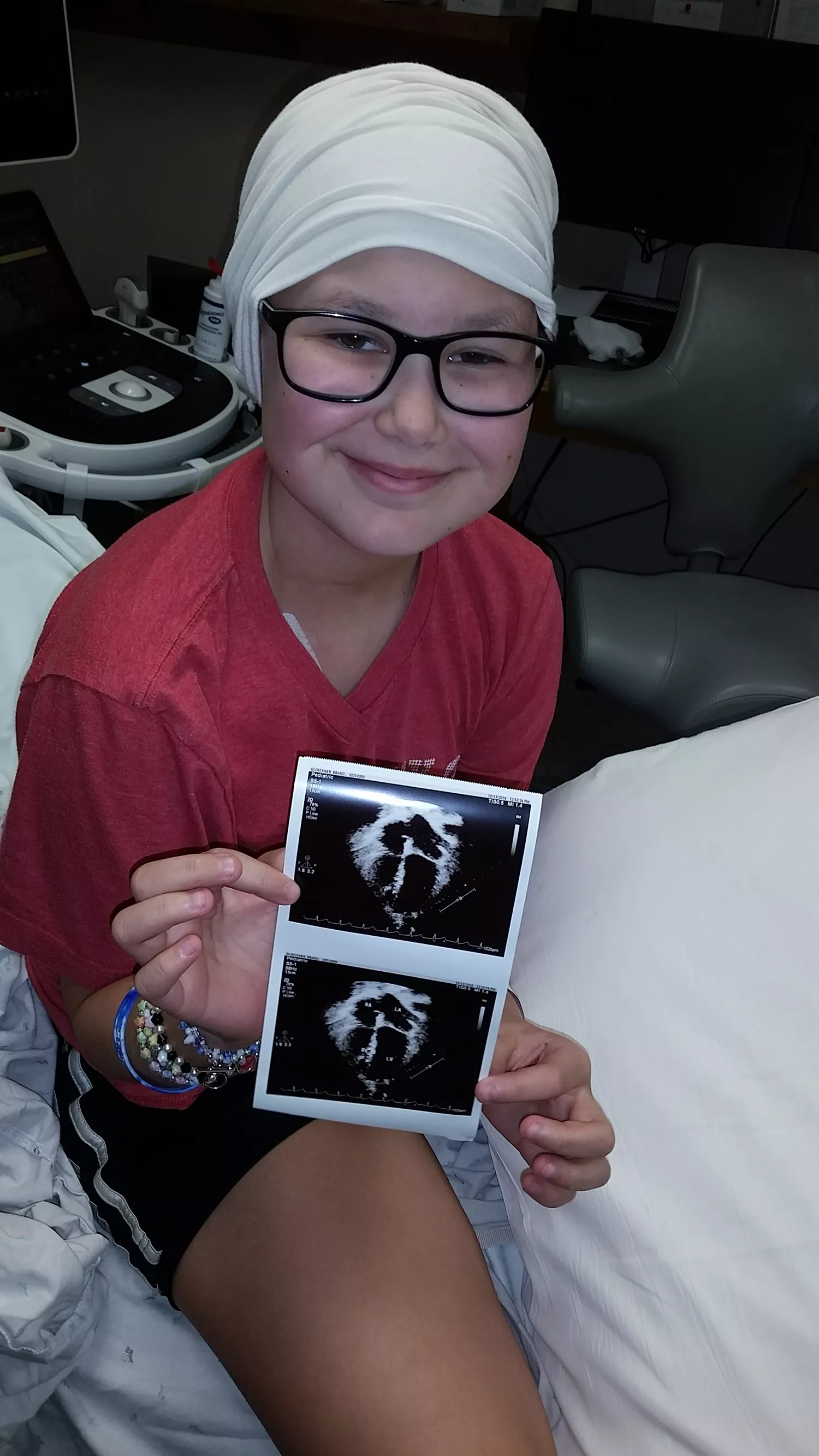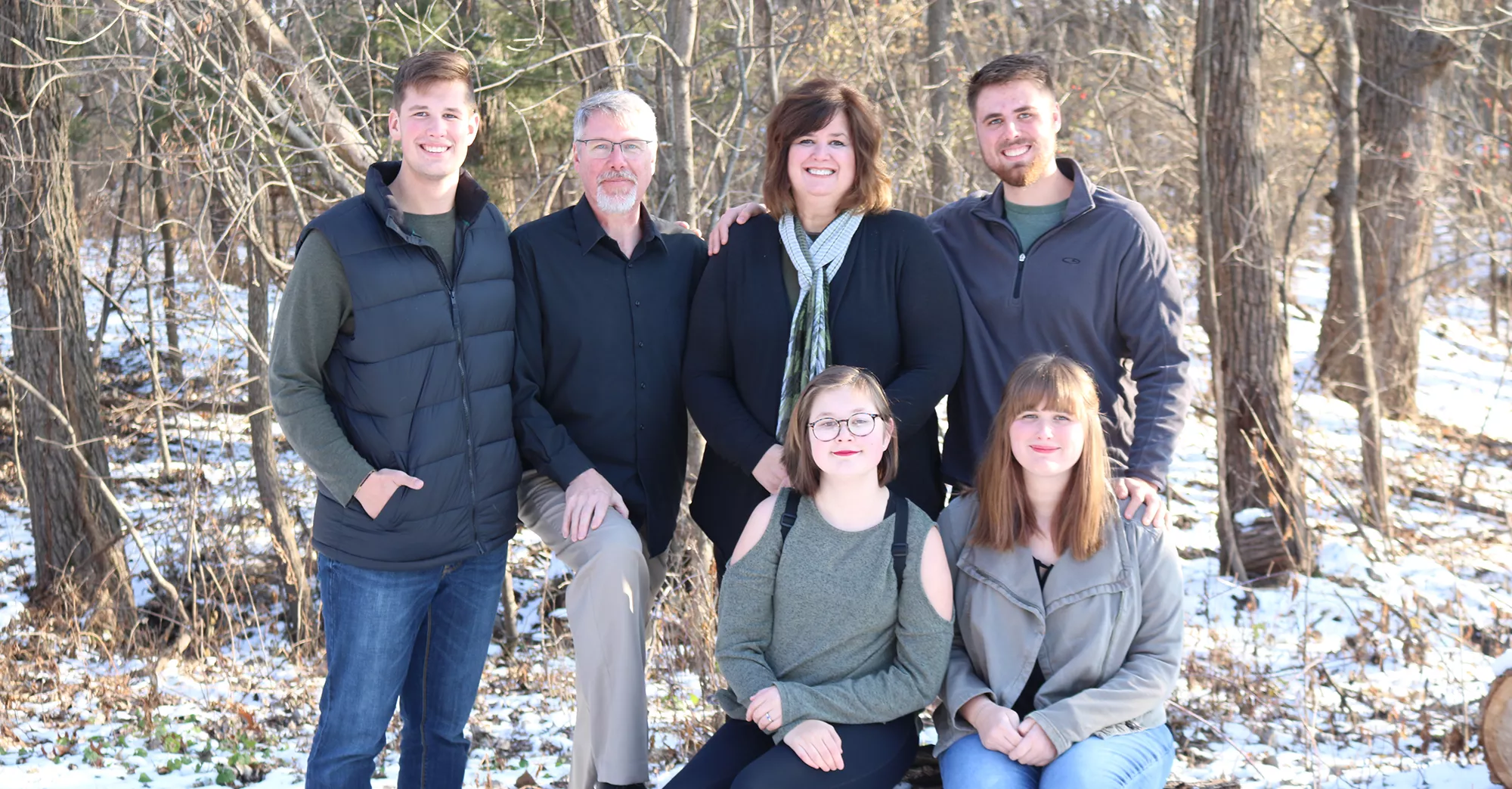Meet Kid Captain Brandi Gloeckner
Brandi Gloeckner was active in sports and other activities through fourth grade, when pain in her leg led to a diagnosis of bone cancer, ultimately resulting in a heart transplant.
“At first we just thought it was growing pains,” Brandi’s mother, Cindy, recalls, noting that Brandi was 10 at the time.
“She was complaining that her leg would hurt,” her father, Bryan, adds. “But then at one point she pointed out to us that the one leg was bigger than the other, and that really caught our attention.”
Brandi was taken for an X-ray, which appeared to show a tumor, and the next day, the family was sent to University of Iowa Stead Family Children’s Hospital for a series of meetings.
She was diagnosed with osteosarcoma – bone cancer – in her left fibula, and her battle with cancer began.
“That's a devastating thing for a parent, and I think that for Brandi, I don't think she understood the seriousness of it,” Bryan recalls.

She had the LVAD for three years because they needed her that far away from her chemotherapy to make sure she was as healthy as possible before they could put her on the transplant list.
Brandi started chemotherapy and the tumor was removed six weeks later, along with most of her left fibula. She uses an orthotic brace due to permanent “foot drop,” or difficulty lifting her foot.
The surgery was followed by seven more months of chemotherapy.
“The oncologist, oncology team and all that crew, especially the nurses, were top notch and they really made everything run smoothly,” Bryan recalls.
With chemotherapy ending in February 2017, the family thought Brandi’s health issues were in the rear-view mirror.
“Then in May of 2017, Brandi broke her leg, and shortly thereafter she developed heart failure,” Bryan remembers.
Doctors diagnosed Brandi with chemotherapy-induced heart failure.
“At that time, her heart was so damaged that they said without an LVAD, a left ventricular assist device, that she would not survive,” Bryan says.
The mechanical pump is implanted into the heart to help the left ventricle pump blood to the rest of the body. The device had to be powered constantly, either by battery or plugged into an electrical outlet, to keep Brandi alive.
“She had the LVAD for three years because they needed her that far away from her chemotherapy to make sure she was as healthy as possible before they could put her on the transplant list,” Cindy says.

Just one week after being placed on the heart transplant list in March 2020 – at the beginning of the COVID-19 pandemic – the family learned that a heart was available.
Brandi recalled shopping for paint for a new room color with her mother when she learned the news.
“It was a crazy time to get a transplant because every day, the rules changed,” Cindy remembers, citing regulations for their other three children visiting the hospital, for example.
Brandi made it through the transplant surgery and has become accustomed to taking her immunosuppressants twice daily so her body doesn’t reject her new heart, while her health care team is monitoring her for kidney failure.
“Because of the chemotherapy, because of the LVAD, because of the heart issues, her kidneys don't work quite the way they would like them to, but they watch her,” Cindy says, adding that her daughter is “extremely strong.”

Now 15, the Robins teen is adjusting to her new heart, is back in school and looks forward to being a Kid Captain.
“I'm excited to go to my first college football game,” Brandi says.
Her parents are grateful for the care she has received at UI Stead Family Children’s Hospital and for the life-giving donation of a new heart.
“We're just very thankful for that family to do that,” Bryan says. “It's such a gift.”